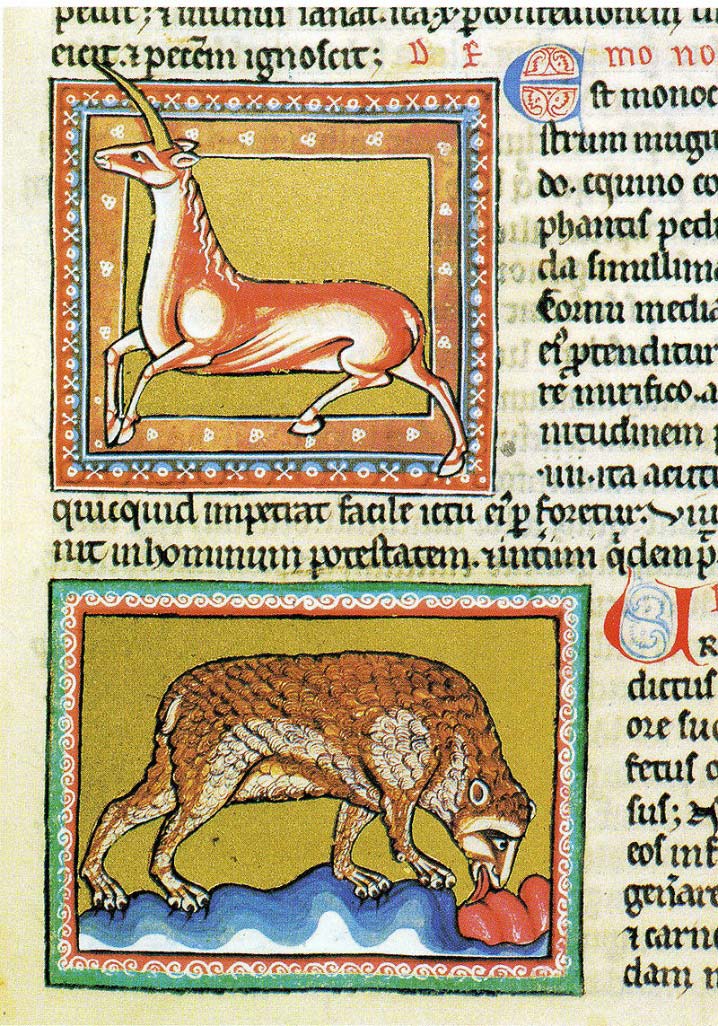During the Middle Ages the phoenix rose from its ashes to be reborn, dangerous dragons battled elephants to the death, and the pelican tore out its own breast to feed its young with its life’s blood – in bestiaries, that is.
A bestiary is a book of beasts; rich, decorative images illuminated in gold and silver showcased a compendium of animals – both very real, and as we now know, completely mythical. These illustrated volumes, popular throughout North Africa, the Middle East, and especially Europe during the 12th century, not only contained observations on the natural world, but also imparted a moral lesson to medieval readers.
Certain creatures represented specific ideals: the king of beasts, the lion, represented Jesus and his lordly position. The elephant was a model for human moral behavior and chastity, as it was believed to mate only once—not for pleasure, but only in order to bear young.

Monoceros (unicorn) and Bear. The Ashmole Bestiary, England, early 13th century. (Public Domain)
While dangerous, most of the animals represented both good and evil. For example:
The lion was king of the beasts (and directly connected to Jesus in an allegory that is repeated to this day). Lions were said to sweep away its tracks with its tufted tail, to sleep with its eyes open, and to be afraid of white cockerels.
The elephant, the most popular in bestiaries, was believed a chaste creature, only mating once. It copulated modestly, back-to-back, satisfying the medieval ideal that sex in marriage was for reproduction – not pleasure.
The mythical griffin had the wings and head of an eagle, the body of a lion, and was said to violently attack and kill horses.
Antelopes had long horns which they used to cut down trees. If they became tangled in branches, it would scream and bellow to be set free and would become easy prey for hunters who were alerted by the noise.
The whale- or turtle-like aspidochelone was a huge sea monster. Because its back was huge and craggy and covered with greenery, it was often mistaken for an island in the sea. It was believed to lure sailors to land on its back and then would purposefully pull them under the water to their deaths.
The boar was considered the most savage of all animals (and that’s something, as the dragon was seen as a dangerous, deadly foe). It was associated with the Antichrist and killed with its formidable tusks. It personified the cardinal sin of Lust. For all of that, the boar was believed to personify strength and bravery; it was powerful and fearless.
Dragons were believed to be the natural enemy of the elephant and would dispatch them without compunction. The dangerous serpents had their power in their lashing tails, and not so much its teeth or breath. It would coil around prey and suffocate them. Powerful indeed! But dragons could not tolerate the roar of a panther… and would run and hide at the sound.




